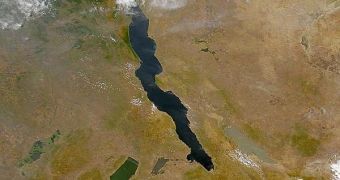For over ten years, NASA has been working on early-warning systems designed to indicate all the possible locations on the Earth where potentially deadly outbreaks may occur. The goal of these systems is to begin mobilization beforehand, so that the number of casualties is reduced to the absolute minimum. They managed to predict the Rift Valley Fever (RVF) outbreak, which took place in Eastern Africa between fall 2006 and spring 2007, by showing analysts the most endangered zones and their risk levels.
RVF is a very strange disease, in that it's mostly caused by weather factors, so predicting it can be very difficult. That's why NASA has collaborated with the National Oceanic and Atmospheric Administration (NOAA) for its study, and the two federal agencies exchange valuable data amongst themselves.
The most important factors that have been tracked over several years include sea surface temperatures, precipitation, and vegetation cover, as well as wind directions and general behavior. It was through the use of these data that NASA experts managed to pinpoint the exact regions of Africa where RVF would strike.
“Greenness describes habitat and represents life. Without such systematic, continuous Earth system measurements from satellites, we would not be able to translate the information into outbreak predictions,” geographer and research team member Assaf Anyamba, who is a remote sensing scientist at the University of Maryland, in Baltimore County, and also a researcher at the Goddard Space Flight Center in Greenbelt, says.
“Satellite data is a valuable tool that allowed us to look remotely at large sections of land in Africa and understand what was happening on the ground,” US Department of Agriculture expert Kenneth Linthicum, who in 1987 co-authored a study linking mosquito life cycle and vegetation growth, published in the journal Science, adds.
“We are coming up on almost 30 years of vegetation data from satellites, which provides us with a good basis for predicting. At this meeting, it was clear that using this tool as a basis for predictions has become accepted as the norm,” he has concluded in January, after returning from a Rift Valley fever workshop in Cairo, Egypt.

 14 DAY TRIAL //
14 DAY TRIAL //